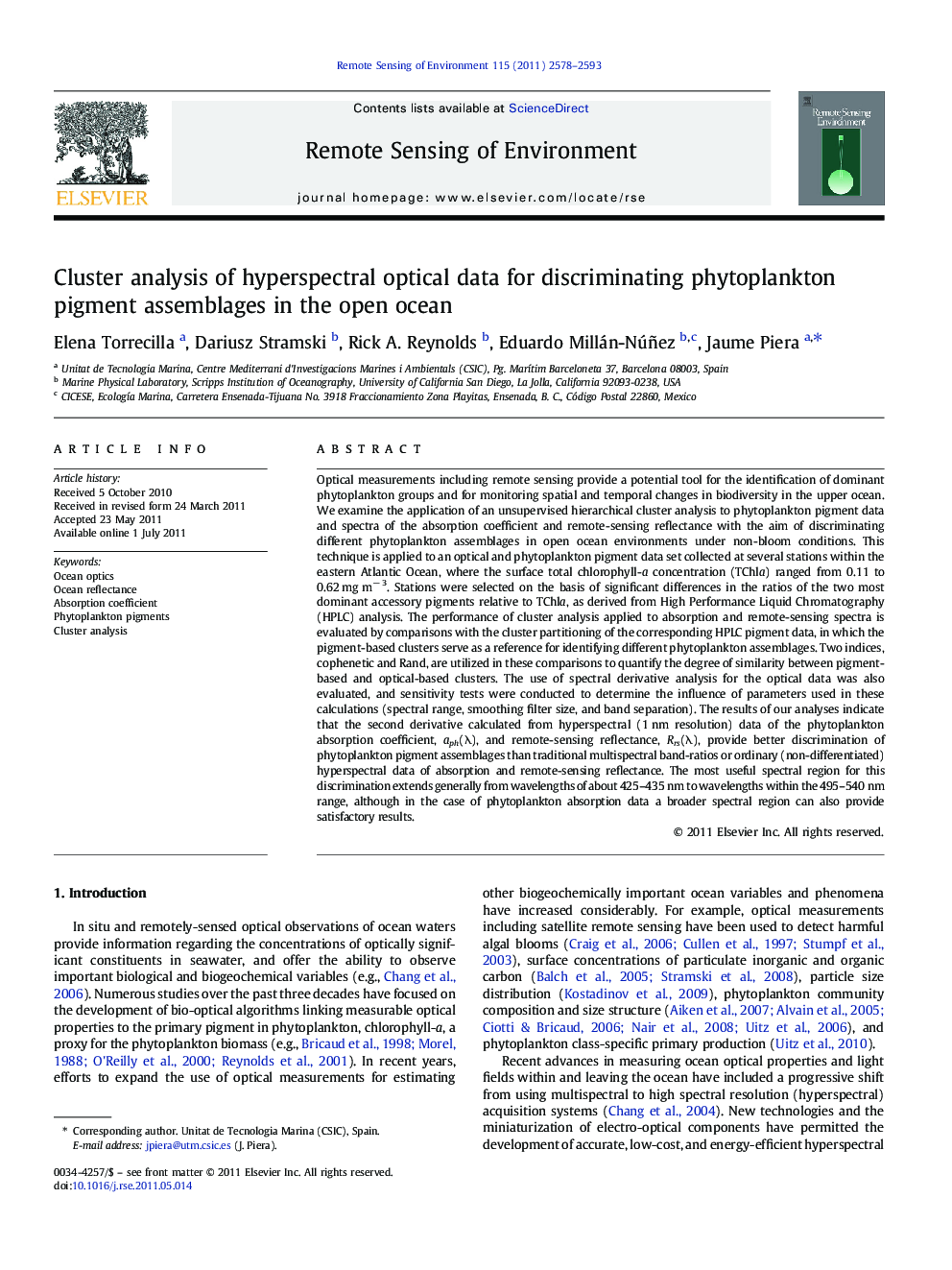| کد مقاله | کد نشریه | سال انتشار | مقاله انگلیسی | نسخه تمام متن |
|---|---|---|---|---|
| 4459305 | 1621287 | 2011 | 16 صفحه PDF | دانلود رایگان |

Optical measurements including remote sensing provide a potential tool for the identification of dominant phytoplankton groups and for monitoring spatial and temporal changes in biodiversity in the upper ocean. We examine the application of an unsupervised hierarchical cluster analysis to phytoplankton pigment data and spectra of the absorption coefficient and remote-sensing reflectance with the aim of discriminating different phytoplankton assemblages in open ocean environments under non-bloom conditions. This technique is applied to an optical and phytoplankton pigment data set collected at several stations within the eastern Atlantic Ocean, where the surface total chlorophyll-a concentration (TChla) ranged from 0.11 to 0.62 mg m− 3. Stations were selected on the basis of significant differences in the ratios of the two most dominant accessory pigments relative to TChla, as derived from High Performance Liquid Chromatography (HPLC) analysis. The performance of cluster analysis applied to absorption and remote-sensing spectra is evaluated by comparisons with the cluster partitioning of the corresponding HPLC pigment data, in which the pigment-based clusters serve as a reference for identifying different phytoplankton assemblages. Two indices, cophenetic and Rand, are utilized in these comparisons to quantify the degree of similarity between pigment-based and optical-based clusters. The use of spectral derivative analysis for the optical data was also evaluated, and sensitivity tests were conducted to determine the influence of parameters used in these calculations (spectral range, smoothing filter size, and band separation). The results of our analyses indicate that the second derivative calculated from hyperspectral (1 nm resolution) data of the phytoplankton absorption coefficient, aph(λ), and remote-sensing reflectance, Rrs(λ), provide better discrimination of phytoplankton pigment assemblages than traditional multispectral band-ratios or ordinary (non-differentiated) hyperspectral data of absorption and remote-sensing reflectance. The most useful spectral region for this discrimination extends generally from wavelengths of about 425–435 nm to wavelengths within the 495–540 nm range, although in the case of phytoplankton absorption data a broader spectral region can also provide satisfactory results.
Research highlights
► Cluster analysis of field data is used to classify ocean phytoplankton assemblages.
► Pigment composition provides reference clusters for comparison with optical data.
► Derivative spectra of absorption and reflectance reproduce well pigment clusters.
► Sensitivity tests identify the optimal spectral ranges and analysis parameters.
Journal: Remote Sensing of Environment - Volume 115, Issue 10, 17 October 2011, Pages 2578–2593